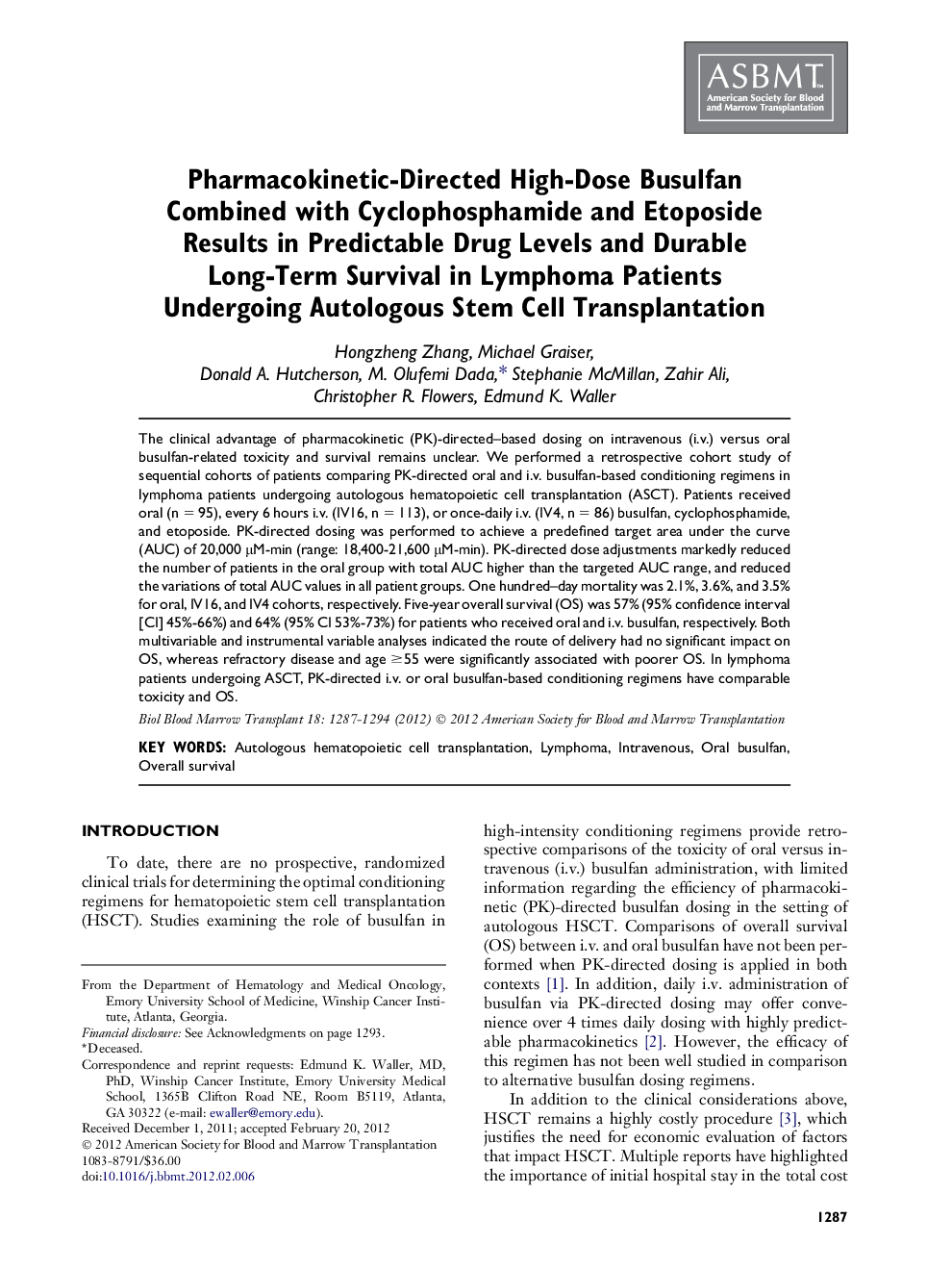| Article ID | Journal | Published Year | Pages | File Type |
|---|---|---|---|---|
| 2102704 | Biology of Blood and Marrow Transplantation | 2012 | 8 Pages |
The clinical advantage of pharmacokinetic (PK)-directed–based dosing on intravenous (i.v.) versus oral busulfan-related toxicity and survival remains unclear. We performed a retrospective cohort study of sequential cohorts of patients comparing PK-directed oral and i.v. busulfan-based conditioning regimens in lymphoma patients undergoing autologous hematopoietic cell transplantation (ASCT). Patients received oral (n = 95), every 6 hours i.v. (IV16, n = 113), or once-daily i.v. (IV4, n = 86) busulfan, cyclophosphamide, and etoposide. PK-directed dosing was performed to achieve a predefined target area under the curve (AUC) of 20,000 μM-min (range: 18,400-21,600 μM-min). PK-directed dose adjustments markedly reduced the number of patients in the oral group with total AUC higher than the targeted AUC range, and reduced the variations of total AUC values in all patient groups. One hundred–day mortality was 2.1%, 3.6%, and 3.5% for oral, IV16, and IV4 cohorts, respectively. Five-year overall survival (OS) was 57% (95% confidence interval [CI] 45%-66%) and 64% (95% CI 53%-73%) for patients who received oral and i.v. busulfan, respectively. Both multivariable and instrumental variable analyses indicated the route of delivery had no significant impact on OS, whereas refractory disease and age ≥55 were significantly associated with poorer OS. In lymphoma patients undergoing ASCT, PK-directed i.v. or oral busulfan-based conditioning regimens have comparable toxicity and OS.
